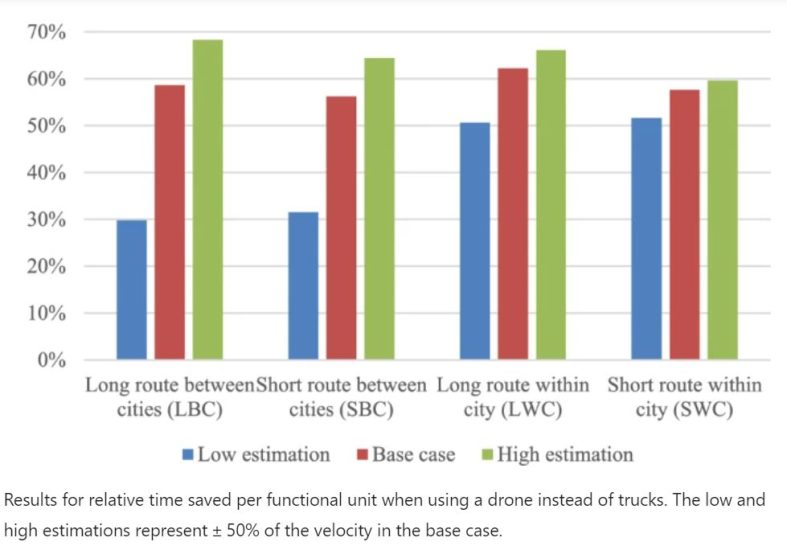A study looking at last-mile delivery published by Nature compares electric drones with e-truck and diesel truck deliveries by evaluating the systems performance of an electric drone for parcel deliveries in mid-sized cities in urban and rural environments.
The research by Aishwarya Raghunatha, Emma Lindkvist, Patrik Thollander, Erika Hansoon and Gera Jonsson, entitled ‘Critical assessment of emissions, costs, and time for last-mile goods delivery by drones versus trucks’ found electric drones compete with diesel trucks, but the e-truck is the option with the least environmental impact. However, the results indicate that the environmental performance of the drone improves when the distance increases.
In terms of economic results, drones were cheaper than electric trucks by a minimum of 117% and cheaper than diesel trucks by a minimum of 131%.
According to the study, “Electric drones as an autonomous mode of transport are scaling up to transform last-mile goods delivery, raising an urgent need for assessing impacts of drone transport from a systems perspective. In this paper, we conduct systems analyses to assess the environmental, economic, and delivery time impact of large drones for delivery scenarios to pick-up centers between mid-size cities predominantly in rural areas, and deliveries within city limits compared with electric and diesel trucks. Results show that large drones have lower emissions than diesel trucks for deliveries in rural areas and that drones don’t compete with electric trucks, mainly due to the high energy demand required for take-off and landing for each delivery.
“Furthermore, we show that electric drones are an economically more cost-effective option than road-bound transport modes such as diesel and electric trucks due to the high degree of automation, and also provide the fastest delivery times. Our analysis provides unique insights that drones can address rapid electrification and emergency applications due to low costs, high flexibility, and fast operations. However, for regulators and practitioners to realize it as an emission-friendly option it is necessary to determine the optimal size of drones, particularly for use cases in urban areas, avoid very low landings for deliveries, and have home deliveries instead of pick-up points.”
For more information visit:




